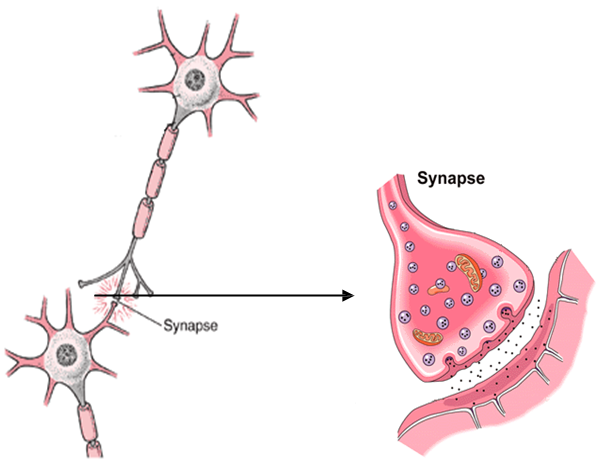All sensations, movements, thoughts, memories, and feelings are the result of signals that pass through neurons. The complexity of the connectivity between these cells is mind-boggling. Each neuron can make contact with thousands or even tens of thousands of others via tiny structures called synapses.
Research Paper: Neuro-Science Behind Visualization
Our brains form a million new connections for every second of our lives. The pattern and strength of the connections is constantly changing and no two brains are alike. It is in these changing connections that memories are stored, habits learned and personalities shaped, by reinforcing certain patterns of brain activity, and losing others.
Neuro-Biology of Learning and Memory
Any skill that we learn creates new connections between neurons corresponding to that learning. Each skill that we possess, whether it is cooking a good meal, giving a good talk, riding a bicycle, solving puzzles can be mapped to a bunch of neural circuits inside the brain. Whenever we use the skill these neural circuits get activated and we seem to know the act and actually do it. Recent research also shows that any change in the behavior or attitude of a person can last only when enough time is given to the strengthening of the corresponding neural circuits inside the brain. With each repetition of the skill we are learning / learnt we strengthen those connections. The stronger the connections between neurons , the easier it is to recall that skill / information. Anything that we learn should be stored as neural imprints inside the brain, which we call as memory. If we forget then we haven’t actually learnt it. So learning and memory are inextricably related to each other at the neuro-biological level.
Neuro Plasticity
Brain’s capability to change its structure, generate new neurons, and connections between existing neurons is called Neuro Plasticity. Until recently it has been thought that brain’s structure is fixed in the early childhood and after that very little change happens other than some use related tweaks here-and- there. But the research done in the past 25 to 30 years turns this idea upside down. It shows that brain is indeed capable of modifying itself and it actually is getting modified as you read this article. Every thought, word, feeling, and action is changing the brain at every moment. We have the capability to both learn and unlearn things if we want to. It is this principle of Neuro Plasticity that gives scientific legitimacy to what we Coaches believe that Clients can change their behaviors, attitudes, and habits provided they are willing to put in enough effort.
It has been established now beyond any doubt that neuro plasticity is one of the fundamental properties of the brain. You can read more about this fascinating area of research by referring to the References section at the end.
Neuro Science behind Visualization
As far as the brain is concerned, if you give an experience a ‘label’ and imbue it with meaning, it will be perceived as something that actually exists in the world.
The thalamus is the Grand Central Station of sensory processing. Every sensation, mood, and thought passes through it as the information is relayed to other parts of the brain. The thalamus plays a crucial role in identifying what is and what isn’t real, and it gives a sense of emotional meaning to the thoughts that emerge in the frontal lobe. If you exercise an idea over and over, your brain will begin to respond as though the idea was a real object in the world.
The thalamus makes no distinction between inner and outer realities, and thus any idea, if contemplated long enough, will take on a semblance of reality. Your belief becomes neurologically real and your brain will respond accordingly.
When you intensely meditate on a specific goal over an extended period of time, your brain begins to relate to your idea as if it were an actual object in the world by increasing activity in thalamus, part of the reality-making process of the brain. The concept begins to feel more obtainable and real, and this is the first step in motivating other parts of the brain to take deliberate action in the world.
Neuro Scientists have discovered two very fundamental properties of the brain that help Visualization work the way it does.
